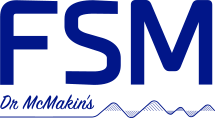www.frequencyspecific.com/about
Carolyn McMakin - contact @ frequencyspecific.com
Kim Pittis - info @ fsmsports365.com
00:39 Exploring the Concept of Yin and Yang
00:59 Valentine's Day and the Power of Love
01:28 Quantum Mechanics of Love
02:37 Web of Love and Connection
04:15 Importance of Why
06:38 The Power of FSM and Patient Stories
06:55 The Love for FSM and Its Impact
10:27 The Excitement of Being an FSM Practitioner
15:11 Challenges and Triumphs of Treatment
20:41 Joy of Helping and Being Part of FSM
25:43 The Drama of Compensation in the Body
26:03 Frozen Shoulder: The Importance of Updated Imaging
27:51 The Power of Data in Healing
29:32 The Impact of Insurance Companies on Medical Decisions
31:15 The Consequences of Snow Shoveling: A Case Study
36:40 The Importance of Detailed Patient History
46:07 The Power of Community in Healing
**Enhancing Patient Care with Frequency Specific Microcurrent**
Frequency Specific Microcurrent (FSM) is an innovative tool that can greatly enhance the practice of medical practitioners by offering a unique approach to healing. As practitioners, understanding how to integrate FSM into your practice can transform patient outcomes.
**Exploring FSM in Practice**
In practice, FSM can manage conditions such as adhesions, bursitis, and chronic pain. It distinguishes itself by addressing specific frequencies to target different types of tissues and conditions. This specificity allows practitioners to tailor treatments to the needs of each patient, providing relief where traditional therapies may have only offered temporary solutions.
**Case Studies and Practical Applications**
- **Managing Adhesive Arachnoiditis:**
- **Addressing Chronic Pain Conditions:**
- **Treating Bursitis:**
